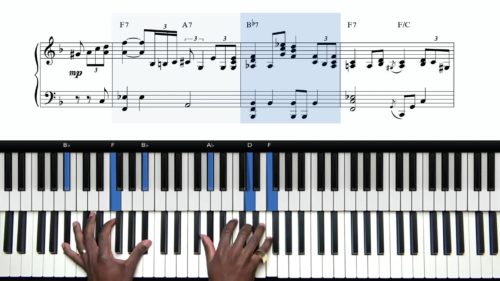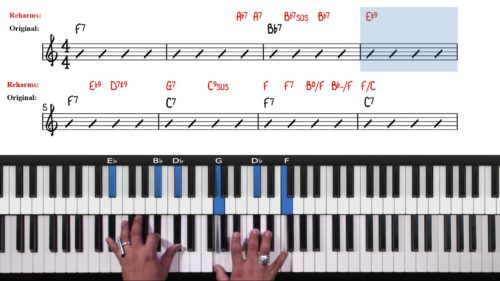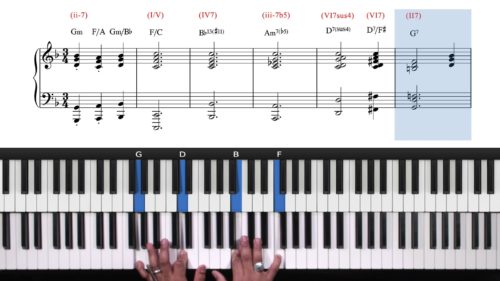Gospel Turnaround
In this lesson we explore the III-vi-II-V progression that can be used to add a soulful gospel flavour to the final turnaround section of the 12 bar blues.
We start by covering the diatonic 7th chords in the key of F so that we understand how these chords are related to the key. We then explore the basic root position voicings and then adapt them to fit the context of the turnaround and to create a soulful Gospel vibe.
Melodic Embellishment & Passing Chords
We discuss a couple of options for filling in space on the vi minor chord which is D- in the key of F Major. We first explore an Ab13 passing chord which creates a chromatic approach into the G7 in the final bar. Dominant chromatic passing chords are a useful device for filling static gaps of harmony.
We then apply a blues scale lick which is a tasteful way to fill the space and adds some melodic interest to the turnaround passage. We further explore blues scale licks in the improvisation module of this course.
Voice Leading Options
We explore different voice leading options on the III7 chord which is A7. Instead of playing a root position A7, we can play the 5th "E" in the bass which then creates a descending bass line movement from F7 the I chord, to A7/E the III chord, leading down to a D minor triad with D on the bass.
Lesson Downloads
-
Gospel Style Turnarounds File Type: pdf
Practice Tips
-
First memorise the III-vi-II-V voicings so that you understand how these chord relate to the diatonic 7th chords in the key of F.
-
When adding passing chords, keep the melody note in mind. The note F becomes the 13th of the Ab13 chord which creates a colourful dominant passing chord.
-
Apply the blues scale embellishment over the D minor chord and experiment with your own melodic embellishments. Draw inspiration from the previous lessons and from your favourite blues recordings.
- 'Echo' the chords in the higher octaves by arpeggiating the chord shapes or simply repeating the melody note in the higher octaves - as demonstrated in the final chapter.







